Every small business owner dreams of turning visitors into lifelong customers. But in today’s competitive online marketplace, the difference between standing out and blending in often comes down to how well you manage your brand. This is where branding guides come in. By creating and using a branding guide effectively, you can build trust, unify your message, and, most importantly, drive conversions. Here’s a practical guide for doing just that.
What Is a Branding Guide?
A branding guide is a document that outlines how your business presents itself to the world. It provides clear instructions for design, voice, and communication, ensuring consistency at every customer touchpoint. Think of it as a rulebook for your brand.
When your branding reflects the same tone and look across platforms, customers recognize and remember your business. Consistency builds trust, and trust leads to conversions.
Key Elements of a Branding Guide
To get started, make sure your guide includes these core components:
- Logo Usage. Include variations for light and dark backgrounds and specify where each version should appear.
- Color Palette. Define your primary and secondary brand colors, and include specifics like RGB or HEX codes.
- Typography. Choose fonts for headings and body texts, and describe how to use them consistently.
- Tone and Voice. Highlight words, phrases, or styles that align with your brand personality and connect with your audience.
- Imagery. Provide guidance on the types of photos, illustrations, and visual assets that align with your message.
By solidifying these details, you create a guidebook that simplifies decision-making while keeping your brand identity clear and consistent.
Why Do Branding Guides Drive Conversions?
Consistency across customer interactions can significantly impact purchasing decisions. Here’s why establishing and using a branding guide matters:
Builds Trust and Credibility
Imagine browsing two websites. One has mismatched colors and inconsistent fonts, while the other looks polished and professional. Which one would you trust? When your branding is cohesive, it signals that you care about details. This convinces customers to trust the quality of your products or services.
Take Patagonia as an example. Their branding consistently focuses on sustainability and adventure. This commitment builds trust with eco-conscious consumers, resulting in both loyalty and conversions.
Enhances Recognition
Consumers prefer brands they recognize. Familiarity makes decision-making easier since customers already feel a connection. Starbucks nails this with consistent branding across cups, menus, signage, and even digital ads. They use their colors and logo to create an instantly recognizable brand identity, leading to consistent sales across the globe.
To apply this, make sure your audience can easily identify your brand whether they are on your website, browsing social media, or receiving an email newsletter.
Simplifies Customer Journey
A solid branding guide eliminates confusion. From the website design to the checkout process, every detail flows seamlessly when your branding elements align. For example, an e-commerce store with clearly branded navigation and visuals will make it easier for customers to understand their options and complete purchases. Simplicity speeds up conversions.
Practical Steps to Create and Use a Branding Guide
Now that you know why branding guides matter, here’s how you can create and implement one for your small business.
1. Define Your Mission and Values
Before you create a branding guide, clarify what your business stands for. What is your purpose? What problem do you solve for your customers? Whether it’s quality, sustainability, or innovation, clearly identifying your mission and values will shape the rest of your branding decisions.
2. Create a Visual Identity
Start with professional design work for your logo. If you’re on a tight budget, tools like Canva allow you to design professional-looking assets. Select a consistent color palette and confirm font families that work for both digital and print use.
A bakery, for example, might choose soft pastel colors and handwritten-style fonts to convey warmth and friendliness. Ensure these design choices align with the message you want your customers to receive.
3. Define Tone and Voice for Communication
Decide how you want to sound to your audience. Friendly? Expert-level authoritative? Conversational? Use examples of approved phrases to help your team stay consistent.
A good tip is to write down both “do” and “don’t” examples for your voice. For instance, a tech repair shop might say, “We’ll solve your tech problems fast,” but not, “We are the gadget-fixing wizards.” Clear communication drives trust.
4. Train Your Team
Get everyone on board. Share your branding guide with your employees or contractors to ensure they apply it consistently. This might include onboarding new hires with an explanation of how to stay on brand or holding quarterly reviews to update any branding materials.
5. Update Regularly
Your branding guide is a living document. Trends change, and so do customer expectations, so you’ll need to revise it every year or two. For example, a small fitness studio might originally feature bold black-and-white branding but could later add bold neon colors as they expand into youth programs.
Real-World Example for Small Businesses
Consider a local coffee shop. Without a clear brand guide, they might switch their logo’s design across different platforms, experiment with random fonts on signs, and fail to use consistent imagery on social media. Customers might visit their Instagram and see one tone, then get confused when their website looks completely different.
Now imagine this same coffee shop builds a branding guide. They use a warm brown color scheme across their website, signs, and coffee cups. Their social media captions are warm and inviting, always ending with phrases like “See you again soon.” By applying branding consistently, they not only enhance recognition but also create trust that encourages people to make additional purchases.
Takeaways to Start Using Today
- Create a straightforward branding guide that aligns with your mission.
- Consistently apply your design and tone on all platforms.
- Train your team to follow the branding guide in communications and design projects.
- Monitor results, and revise your guide when needed.
By keeping your branding clear and consistent, you create an online and offline experience that builds trust and converts customers. Small efforts, like aligning your logo, messaging, and tone, can grow to become the foundation of lasting success.
If you need help creating a branding guide that sets your business apart, MoDuet can help. Contact us today to make your brand work harder for you.
We Want To Talk To You About Your Marketing Goals.
Let’s Supercharge Your Online Growth!












